All GD300-21 series are equipped with built-in DC reactor as standard, and the power factor can reach above 0.9.
The circulating variable frequency pump is one of the working modes of the GD300-16 HVAC special mode. In the long-term stable operation of the water supply system, the variable frequency pump has been running for a long time, which will affect its service life, and other variable frequency pumps are not involved in operation. In order to prolong the service life of the variable frequency motor, under the stable state of the system, all the variable frequency motors to be started run in turn according to the set cycle.
First, the inverter coast stop, and then controls the lower limit frequency of the cyclic variable frequency motor to be started as the initial set frequency, and superimposes PID1 to adjust the output frequency on the basis of this frequency as the final set frequency to start running, and finish the cycle process.
Gd200a drives 380V 50Hz motor.
When the 380V 50Hz motor runs to 31hz, the corresponding output voltage is 236v. If the current surges beyond this voltage, it can be judged that the motor is 220V. Use 220V inverter or change the motor winding connection method.
(such as the drum of industrial washing machine)
Set magnetic flux braking and DC braking; Cancel overvoltage stall and AVR function; If still can't stop the load, need to install the braking resistor;
In V/F mode, please adjust P04.09 = 0, P08.41 = 00; check under-voltage point of factory parameter.
In vector mode, please adjust P03.04 = 2.5, P08.41 = 00. check under-voltage point of factory parameter.
In V/F mode, please adjust P04.09 = 0, P08.41 = 00;
In vector mode, please adjust P03.04 = 2.5, P08.41 = 00.
First check proportional, then integral, and finally add differential
The curve oscillates frequently, and the scale dial should be enlarged
The curve floats around the big bay, and the scale dial pulls to the small
The curve deviates and recovers slowly, and the integration time decreases
The curve has a long fluctuation period and the integration time is longer
The oscillation frequency of the curve is fast. First reduce the differential
It fluctuates slowly when the dynamic difference is large, the differential time should be longer.
When the VFD is not used, the leakage current is generally small. When using the VFD, because the power module of the inverter switches at high speed, there are high-order harmonics in the output current. Because of the inductance between the cable and the ground and between the cables, a large leakage current (up to 10 times when the VFD is not used) is generated.
When the motor is started, the starting current corresponding to the capacity will flow, and the transformer on the stator side of the motor will produce a voltage drop. When the motor capacity is large, the voltage drop will also have a great impact. The VFD connected to the same transformer will make a judgment of undervoltage or instantaneous stop, so sometimes the protection function acts, resulting in stop.



Our site uses cookies to provide you with a better onsite experience. By continuing to browse the site you are agreeing to our use of cookies in accordance with our Cookie Policy.